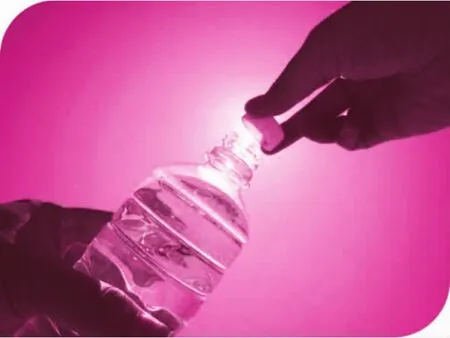No more ingesting lots of microplastics
2019-09-21广东佛山李华军
广东佛山 李华军

images/BZ_41_185_947_1992_1223.png
海词积累
1.prevalencen.普遍性
2.inhalationn.吸入
3.respirationn.呼吸
4.exclusivelyadv.仅仅;专门
5.cumulativeadj.累积的
Microplastics are everywhere in our environment.It's hardly surprising that the tiny fragments have also been found in humans.A new study shows that Americans are consuming as many as 121,000 particles each year.
Measuring 50 to 500 microns in length,microplastics derive from a variety of sources,including large plastics that break down into smaller and smaller pieces.Therefore,much remains unknown about theprevalenceof these materials within the human body,as well as their impact on human health.
Hoping to fill in some of these gaps,a research team led by Kieran Cox,a PhD candidate at the University of Victoria,looked at 26 papers assessing the amount of microplastics in commonly consumed food items,among them seafood,sugars,salts,honey,alcohol and water.
The team also evaluated the potential consumption of microplastics throughinhalationusing previously reported data on microplastic concentrations in the air and the Environmental Protection Agency's reportedrespirationrates.Based on these data,the researchers calculated that our annual consumption of microplastics via food and drink ranges from 39,000 to 52,000 particles.When microplastics ingested through inhalation are taken into account,the range jumps to between 74,000 and 121,000 particles per year.
The authors of the study found that people who drinkexclusivelyfrom plastic water bottles ingest an additional 90,000 microplastics each year,compared to 4,000 among those who only consume tap water.“This shows that small decisions,over the course of a year,really matter and have an impact,”Cox says.
The new study,according to its authors,was the first to investigate“thecumulativehuman exposure”to microplastics.But in all likelihood,the research tells only a fraction of the entire story.Collectively,the food and drink that the researchers analyzed represent 15 percent of Americans'caloric intake.The team could not account for food groups like fruits,vegetables and grains because there simply is not enough data on their microplastic content.
For those worried about microplastic consumption,cutting out bottled water is a good place to start.But to really get to the heart of the problem,we have to stop producing and using so much plastic.

Reading Check
1.What makes it difficult to know about the prevalence of microplastics?
A.Its size. B.Its quality. C.Its quantity. D.Its shape.
2.How did Kieran Cox's team evaluate the potential consumption of microplastics?
A.By contrasting impact. B.By analyzing the data.
C.By interviewing patients. D.By conducting experiments.
3.What does the underlined word “jumps” in paragraph 4 probably mean?
A.Varies greatly. B.Shows clearly.
C.Appears abruptly. D.Increases suddenly.
4.What can be inferred from Kieran Cox's study?
A.The team has made overall progress in the study of microplastics.
B.We consume 74,000 to 121,000 particles per year from food and drink.
C.Reducing plastic water bottles is a good way to take in fewer microplastics.
D.The study is among the earliest to investigate human's exposure to microplastics.
Language Study
Complete the following sentences according to the text.
1. _________(measure)50 to 500 microns in length,microplastics derive from a variety of sources,including large plastics that break down into smaller and smaller pieces.
2.________ (hope)to fill in some of these gaps,a research team _________(lead)by Kieran Cox,a PhD candidate at the University of Victoria,looked at 26 papers ________(assess)the amount of microplastics in commonly ________(consume)food items.
3.The team also evaluated the potential consumption of microplastics through inhalation_________(use)previously reported data.
4. _________(base) on these data,the researchers calculated that our annual consumption of microplastics via food and drink ranges from 39,000 to 52,000 particles.
